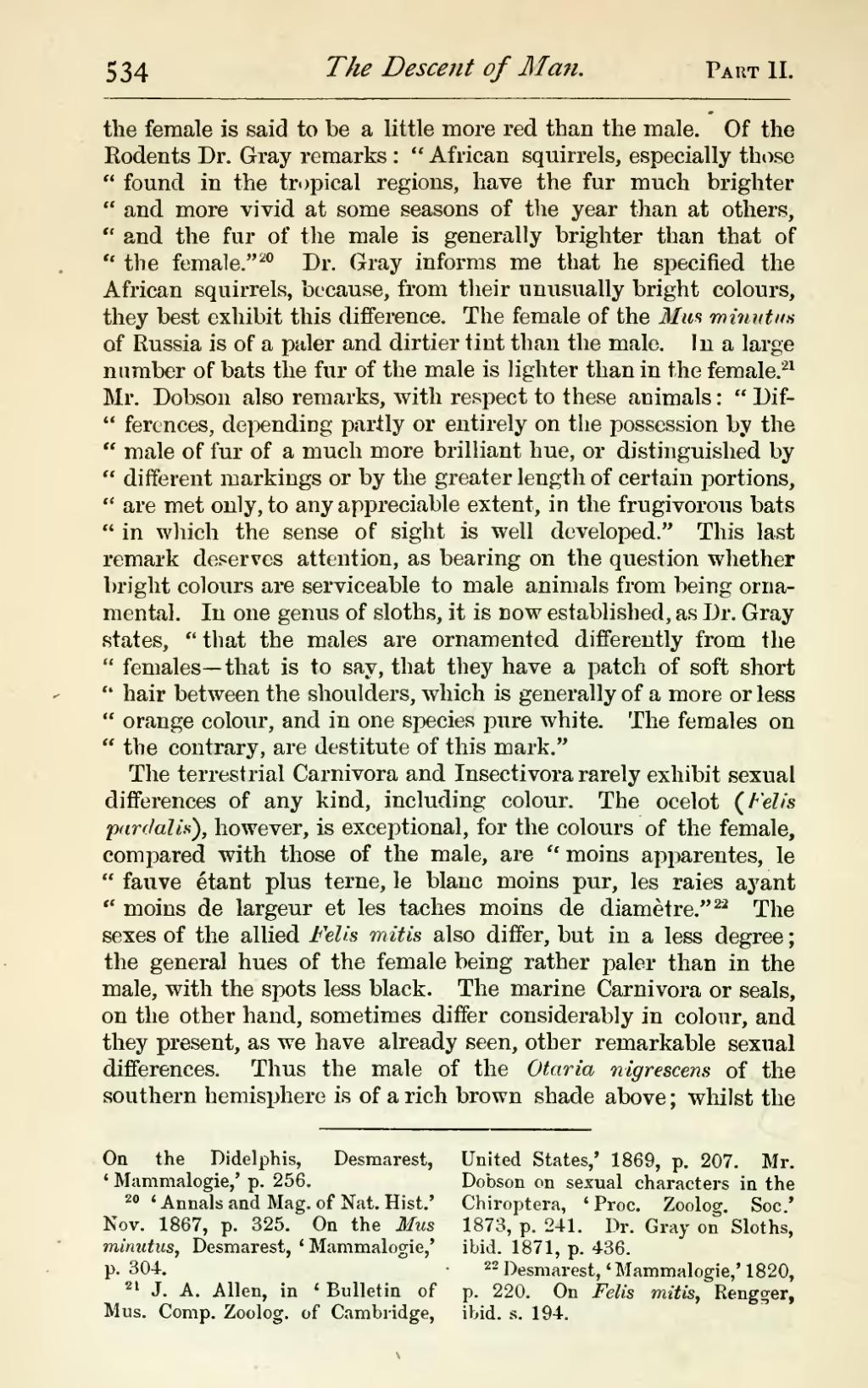the female is said to be a little more red than the male. Of the Rodents Dr. Gray remarks: "African squirrels, especially those found in the tropical regions, have the fur much brighter and more vivid at some seasons of the year than at others, and the fur of the male is generally brighter than that of the female."[1] Dr. Gray informs me that he specified the African squirrels, because, from their unusually bright colours, they best exhibit this difference. The female of the Mus minutus of Russia is of a paler and dirtier tint than the male. In a large number of bats the fur of the male is lighter than in the female.[2] Mr. Dobson also remarks, with respect to these animals: "Differences, depending partly or entirely on the possession by the male of fur of a much more brilliant hue, or distinguished by different markings or by the greater length of certain portions, are met only, to any appreciable extent, in the frugivorous bats in which the sense of sight is well developed." This last remark deserves attention, as bearing on the question whether bright colours are serviceable to male animals from being ornamental. In one genus of sloths, it is now established, as Dr. Gray states, "that the males are ornamented differently from the females—that is to say, that they have a patch of soft short hair between the shoulders, which is generally of a more or less orange colour, and in one species pure white. The females on the contrary, are destitute of this mark."
The terrestrial Carnivora and Insectivora rarely exhibit sexual differences of any kind, including colour. The ocelot (Felis pardalis), however, is exceptional, for the colours of the female, compared with those of the male, are "moins apparentes, le fauve étant plus terne, le blanc moins pur, les raies ayant moins de largeur et les taches moins de diamètre."[3] The sexes of the allied Felis mitis also differ, but in a less degree; the general hues of the female being rather paler than in the male, with the spots less black. The marine Carnivora or seals, on the other hand, sometimes differ considerably in colour, and they present, as we have already seen, other remarkable sexual differences. Thus the male of the Otaria nigrescens of the southern hemisphere is of a rich brown shade above; whilst the
- ↑ 'Annals and Mag. of Nat. Hist.' Nov. 1867, p. 325. On the Mus minutus, Desmarest, 'Mammalogie,' p. 304.
- ↑ J. A. Allen, in 'Bulletin of Mus. Comp. Zoolog. of Cambridge, United States,' 1869, p. 207. Mr. Dobson on sexual characters in the Chiroptera, 'Proc. Zoolog. Soc.' 1873, p. 241. Dr. Gray on Sloths, ibid. 1871, p. 436.
- ↑ Desmarest, 'Mammalogie,' 1820, p. 220. On Felis mitis, Rengger, ibid. s. 194.
On the Didelphis, Desmarest, 'Mammalogie,' p. 256.
